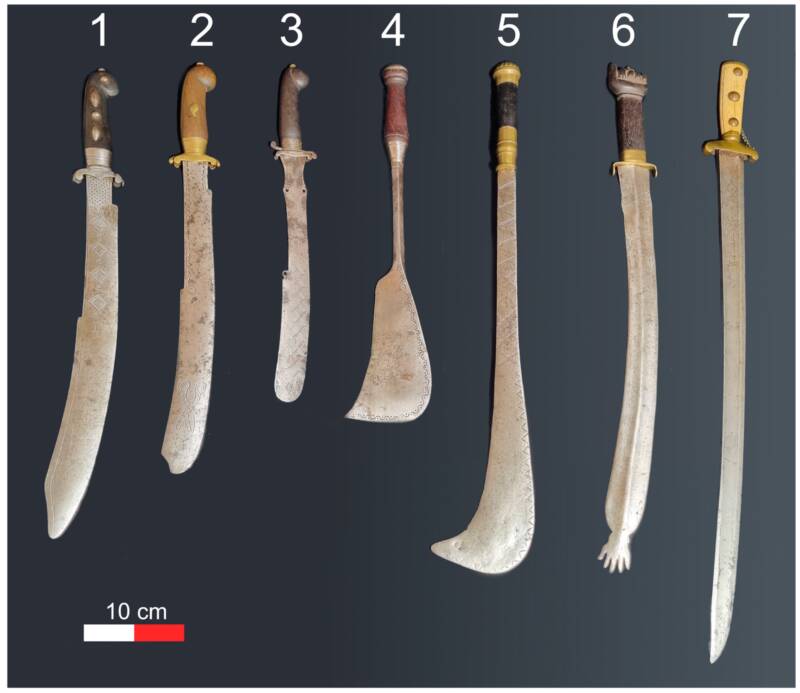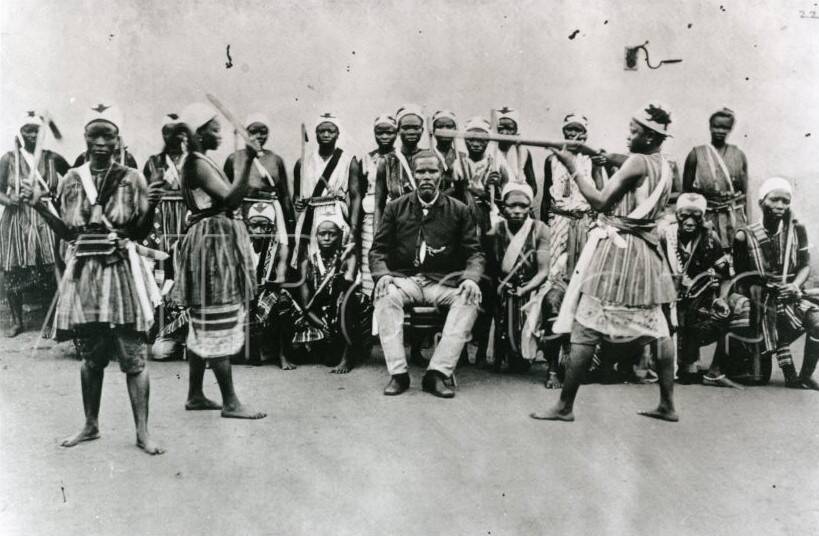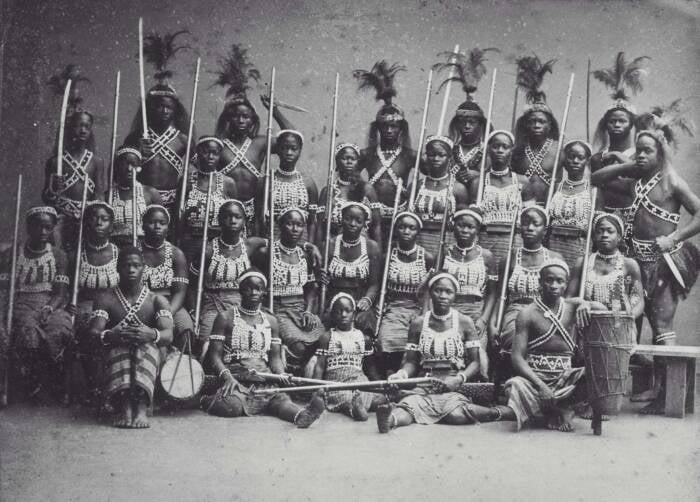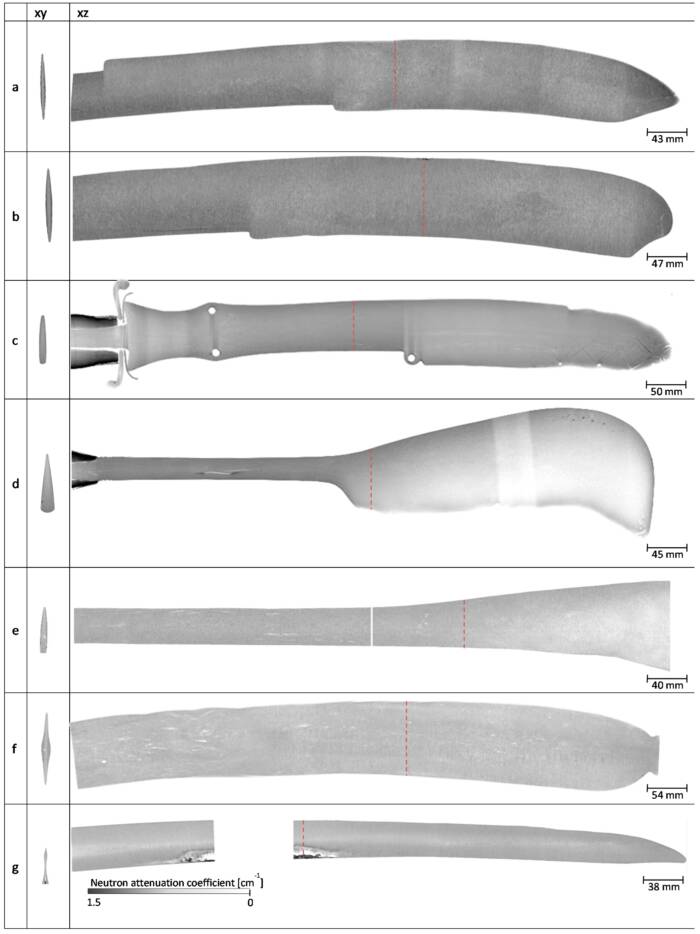These swords were forged via a distinctive process of blending various types of iron and then folding them together into delicate patterns, a method that created uniquely beautiful blades and has never been seen anywhere else in history.

ANSTOThe six Dahomey swords, or “hwi,” recently analyzed by ANSTO scientists.
New research shows that swords forged in the West African Kingdom of Dahomey in the 19th century were made by local craftspeople and not imported from Europe, as some experts had speculated.
Scientists from the Australian Nuclear Science and Technology Organization (ANTSO) discovered, following a non-invasive multi-methodological analysis, that the Dahomey swords were likely made from locally smelted iron, contradicting the existing consensus among historians.
The results of their research have now been published in the journal Heritage.
The Story Of The West African Kingdom Of Dahomey And Its Famous Mino Warriors

Public DomainDahomey female warriors, known as the Mino, in the 1890s.
For roughly 300 years starting in the early 1600s, the Kingdom of Dahomey stood in what is now southern Benin. Dahomey rose to prominence throughout the 18th and 19th centuries especially, during which time it became a significant regional power and a successful trade partner on the world stage.
Dahomey’s economy was heavily reliant on the Atlantic slave trade, with the kingdom capturing and selling enslaved individuals to European traders in exchange for firearms and other goods. Thus Dahomey society became heavily militarized, and was particularly known for its elite female warriors known as the Mino.
The Mino (the Fon language word for “our mothers”), also known as the Dahomey Amazons, were an all-female military regiment that initially started as a corps of elephant hunters. Over time, however, and especially under the reign of King Ghezo (1818-1858), they became a fearsome military force. The Mino were known for their rigorous training, strong survival skills, and elite weapons handling. By the mid-19th century, they made up about a third of Dahomey’s army.

Public DomainDahomey Amazons in Paris, 1891.
The Mino wielded unique swords known as “hwi,” which featured intricate designs. Hwi were also used in various rituals and ceremonies that showcased their exemplary craftsmanship. And due to the kingdom’s extensive trade with European nations, many experts had mistakenly credited the swords to European metalworkers. The new research, however, upends this idea and reveals just how skilled Dahomey craftspeople were.
Inside The True Origins Of The Dahomey Swords
ANTSO scientists examined six Dahomey swords from 19th century using neutron tomography, powder diffraction, and diffraction residual stress measurements to reveal their composition and manufacturing history.
Through these tests, researchers confirmed that the swords were made by African smiths and not imported from Europe. They were forged out of several different metals, based on analysis of cross sections that revealed differences in the porosity of the metals used.

ANSTOAnalysis of the Dahomey swords revealed various regional styles.
“Importantly, the combination of neutron tomography images and neutron diffraction analyses provide a wealth of new insights into the manufacture of African swords. In particular, it sheds new light on African craftsmanship and technological sophistication,” said Dr. Floriana Salvemini, an expert in historical metallurgy.
Based on the analysis, the blades showed “considerable variation” in manufacturing, suggesting that they were produced via several unique processes, ones not seen elsewhere in world history.
What the study did not find, however, was the provenance of the metals used in the swords’ construction. It is possible that the metal, based on its composition, could have come from Bassar (modern-day Togo), Sweden, the Ruhr Valley, or perhaps Brazil.
Regardless of where the metal came from, though, the fact that the swords were made locally is a significant finding. For many years, these remarkable swords had been improperly attributed to European smiths, but this new research helps to reclaim this piece of West African history and challenge the common narrative, giving proper credit where it is due.
After reading about this new analysis of the Dahomey swords, learn about the fascinating history of the shotel sword. Then, read about the deadly, all-powerful Ulfberht swords wielded by the Vikings.





